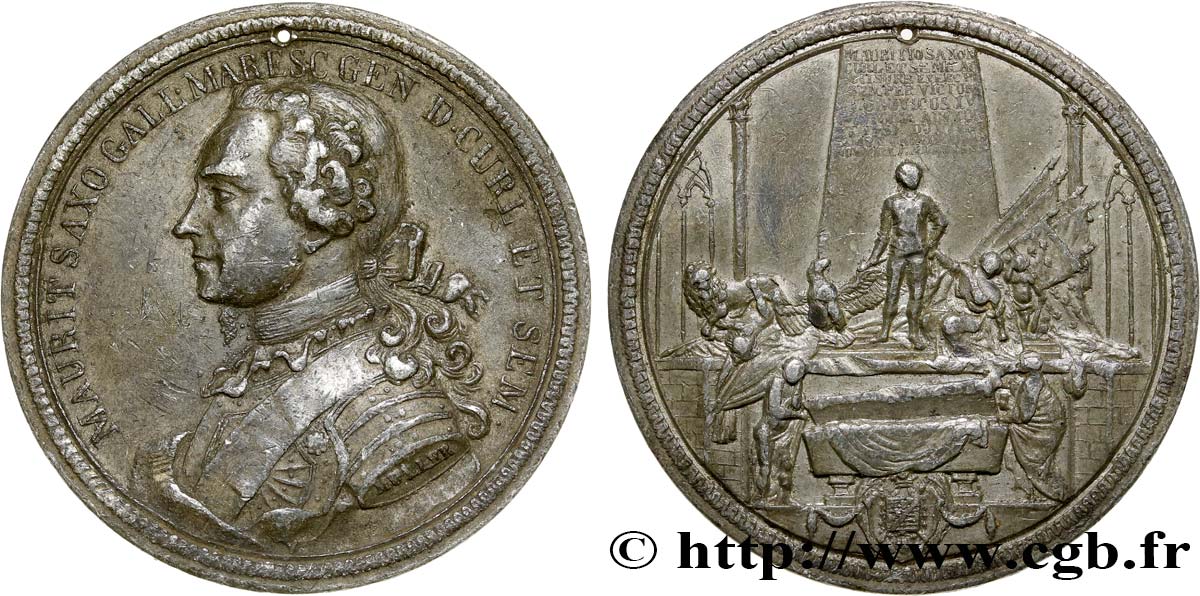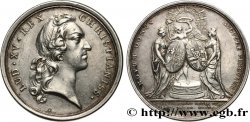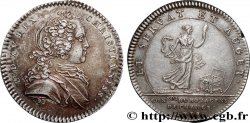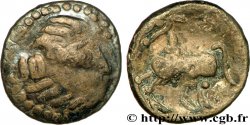E-auction 326-242293 - fme_369934 - LOUIS XV DIT LE BIEN AIMÉ Médaille du mausolée du Maréchal Maurice de Saxe
Чтобы принять участие в торгах, вы должны войти в систему и стать подтвержденным участником аукциона. Войдите, чтобы сделать ставку. Ваш аккаунт будет подтвержден в течение 48 часов. Не ждите до закрытия торгов, чтобы зарегистрироваться.Сделав ставку на данный товар, вы вступаете в юридическое соглашение на покупку выбранного товара и нажатием кнопки «Сделать ставку» подтверждаете принятие вами условий интернет-аукционов cgb.fr.
Ставка может бить сделана только в полном эквиваленте евро. Торги закроются согласно времени, указанному в описании товара, все ставки, сделанные после закрытия торгов, учитываться не будут. Не следует откладывать предложение вашей ставки до последнего момента, так как система может не успеть обработать вашу заявку, и ваша ставка не будет принята. Более детальную информацию вы найдёте здесь: FAQ по интернет-аукционам.
БЕСПЛАТНО.
БЕСПЛАТНО.
| Оценить : | 90 € |
| Цена : | 26 € |
| Максимальная предлагаемая цена : | 40 € |
| Конец торгов : | 15 July 2019 18:14:00 |
| Участников : | 4 Участников |
Тип Médaille du mausolée du Maréchal Maurice de Saxe
Дата: 1828
Монетный двор / Город: 67 - Strasbourg
Металл: tin
Диаметр: 55 mm
Ориентация осей монеты: 12 h.
Гравер MULLER
Вес: 40 g.
Век: lisse
Пуансон: sans poinçon
Комментарии о состоянии
Médaille en étain, avec d’importantes traces de circulation. Flan voilé et troué à 12h
Лицевая сторона
Аверс: легенда: MAURIT SAXO GALL. MARESCGEN D. CURL ET SEM..
Аверс: описание: Buste cuirassé du maréchal à gauche.
Обратная сторона
Реверс: легенда: ANÉPIGRAPHE.
Реверс: Описание: Mausolée du maréchal ; la Mort appelle le maréchal au tombeau, tandis que la France sous les traits d'une figure féminine en pleurs le retient du bras ; des drapeaux, un aigle et un lion rappellent la gloire militaire et la bravoure du grand soldat.
Комментарий
Médaille représentant le mausolée du Maréchal Maurice de Saxe à Strasbourg réalisée par Müller en 1828, dont quelques exemplaires ont été refrappés avec les coins d’origine pour le Cercle Numismatique d'Alsace en 1933.
D’autres médaille du même type sont signées D.KAN.F.E (?).
Maurice de Saxe, comte de la Raute (1696-1710) puis comte de Saxe (1710-1750), est un militaire né le 28 octobre 1696 à Goslar (duché de Saxe) et mort le 30 novembre 1750 au château de Chambord. Il était maréchal général des camps et armées de Louis XV.
Une cérémonie funèbre fut célébrée à Paris pour le maréchal de Saxe, mais le grand militaire, protestant, ne pouvait être inhumé dans la capitale. Son corps fut donc envoyé à Strasbourg (la principale ville protestante) pour être inhumé. Le corps arriva à Strasbourg le 7 février 1751 et reposa tout d'abord dans l'église du Temple Neuf où le pasteur et théologien Jean Léonard III Froereisen prononça sa Harangue. Louis XV commanda alors à Jean-Baptiste Pigalle un magnifique mausolée, élevé à partir de 1771 dans le chœur de l'église protestante Saint-Thomas, les restes du corps furent transférés dans un caveau sous ce mausolée. C'est une œuvre monumentale, dont le thème est classique: la Mort appelle le maréchal au tombeau, tandis que la France sous les traits d'une figure féminine en pleurs le retient du bras. Des drapeaux, un aigle, un lion, rappellent la gloire militaire et la bravoure du grand soldat, dont la statue altière, cuirassée, arbore un visage étonnement réaliste mais serein.
Medal representing the mausoleum of Marshal Maurice de Saxe in Strasbourg made by Müller in 1828, some examples of which were re-struck with the original dies for the Cercle Numismatique d'Alsace in 1933.
Other medals of the same type are signed D. KAN. F. E (?).
Maurice de Saxe, Count of La Raute (1696-1710) then Count of Saxe (1710-1750), was a soldier born on October 28, 1696 in Goslar (Duchy of Saxony) and died on November 30, 1750 at the Château de Chambord. He was Marshal General of the camps and armies of Louis XV.
A funeral ceremony was held in Paris for Marshal de Saxe, but the great soldier, a Protestant, could not be buried in the capital.. His body was therefore sent to Strasbourg (the main Protestant city) for burial.. The body arrived in Strasbourg on February 7, 1751 and rested first in the church of the Temple Neuf where the pastor and theologian Jean Léonard III Froereisen delivered his Harangue. Louis XV then commissioned Jean-Baptiste Pigalle to build a magnificent mausoleum, erected from 1771 in the choir of the Protestant church of Saint-Thomas. The remains of the body were transferred to a vault beneath this mausoleum.. It is a monumental work, with a classical theme: Death calls the marshal to the tomb, while France, in the form of a weeping female figure, holds him back with her arm.. Flags, an eagle, a lion, recall the military glory and bravery of the great soldier, whose haughty, armored statue displays a surprisingly realistic but serene face.
D’autres médaille du même type sont signées D.KAN.F.E (?).
Maurice de Saxe, comte de la Raute (1696-1710) puis comte de Saxe (1710-1750), est un militaire né le 28 octobre 1696 à Goslar (duché de Saxe) et mort le 30 novembre 1750 au château de Chambord. Il était maréchal général des camps et armées de Louis XV.
Une cérémonie funèbre fut célébrée à Paris pour le maréchal de Saxe, mais le grand militaire, protestant, ne pouvait être inhumé dans la capitale. Son corps fut donc envoyé à Strasbourg (la principale ville protestante) pour être inhumé. Le corps arriva à Strasbourg le 7 février 1751 et reposa tout d'abord dans l'église du Temple Neuf où le pasteur et théologien Jean Léonard III Froereisen prononça sa Harangue. Louis XV commanda alors à Jean-Baptiste Pigalle un magnifique mausolée, élevé à partir de 1771 dans le chœur de l'église protestante Saint-Thomas, les restes du corps furent transférés dans un caveau sous ce mausolée. C'est une œuvre monumentale, dont le thème est classique: la Mort appelle le maréchal au tombeau, tandis que la France sous les traits d'une figure féminine en pleurs le retient du bras. Des drapeaux, un aigle, un lion, rappellent la gloire militaire et la bravoure du grand soldat, dont la statue altière, cuirassée, arbore un visage étonnement réaliste mais serein.
Medal representing the mausoleum of Marshal Maurice de Saxe in Strasbourg made by Müller in 1828, some examples of which were re-struck with the original dies for the Cercle Numismatique d'Alsace in 1933.
Other medals of the same type are signed D. KAN. F. E (?).
Maurice de Saxe, Count of La Raute (1696-1710) then Count of Saxe (1710-1750), was a soldier born on October 28, 1696 in Goslar (Duchy of Saxony) and died on November 30, 1750 at the Château de Chambord. He was Marshal General of the camps and armies of Louis XV.
A funeral ceremony was held in Paris for Marshal de Saxe, but the great soldier, a Protestant, could not be buried in the capital.. His body was therefore sent to Strasbourg (the main Protestant city) for burial.. The body arrived in Strasbourg on February 7, 1751 and rested first in the church of the Temple Neuf where the pastor and theologian Jean Léonard III Froereisen delivered his Harangue. Louis XV then commissioned Jean-Baptiste Pigalle to build a magnificent mausoleum, erected from 1771 in the choir of the Protestant church of Saint-Thomas. The remains of the body were transferred to a vault beneath this mausoleum.. It is a monumental work, with a classical theme: Death calls the marshal to the tomb, while France, in the form of a weeping female figure, holds him back with her arm.. Flags, an eagle, a lion, recall the military glory and bravery of the great soldier, whose haughty, armored statue displays a surprisingly realistic but serene face.








 Cообщить об ошибке
Cообщить об ошибке Распечатать страницу
Распечатать страницу Отправить мой выбор
Отправить мой выбор Задать вопрос
Задать вопрос Consign / sell
Consign / sell
 Информация
Информация















